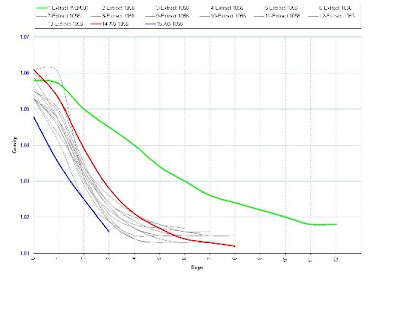- Availability of ingredients - When we go to our LHBS with our recipe, sometimes we can't find the exact grain or hops we are looking for, so we end up having to replace those with whatever is the closest available compromising the outcome and your attempt to brew that batch that you liked. One way to avoid that is to stock some vital grains and hops so you make sure you use the right ingredients. Liquid yeast however is better to buy as you brew so you can get the fresher possible. Dry yeast can be stored for several month with no problems.
- Temperature control - Keeping fermentation temperatures under control is a very important step to re-create the same beer profile twice. That's when a fermentation chamber comes very handy. Many home brewers convert their chest freezers into fermentation chambers by replacing the thermostat, some other folks add a temperature controller. This approach seems to be very popular and can also work when brewing Lagers, which requires lower temperatures. My personal approach when I start thinking to build a fermentation chamber was that I would like to both heat and cool by carboy automatically, so it would allow me to brew either during summer, when temperatures reach 100F, and during winter with 15F outside. Some photos of my fermentation camber can be found HERE.
- Recording the variables - It is important to keep track of as many variables as possible in order to allow you to re-do a batch. Here's a list of the variables that I currently keep track on all my batches.
- Detailed description of all ingredients, including name, brand, quantity, time in which it was added to the brewing process
- Temperatures of the strike water, ambient, sparge water, initial and final mashing temperatures, mashing time, boil time, time of additions to the boil.
- Measurements of the wort gravity when starting the sparge, end of sparge, pre-boil and final original gravity of the wort before pitching the yeast. Calculated mashing and brew house efficiency.
- Fermentation temperatures, daily measurements of gravity during fermentation, which I use to build a chart of gravity x days. That's allows me to track the fermentation profile and identify possible issues even before it happens, like a stuck fermentation, which can be avoided if temperature is increased to keep the yeast working. Finally, track of the final gravity and calculated alcohol by volume, color and IBU's.
Below is an example of gravity chart for multiple batches. Gravity was taken daily. The green curve is for a Whitelabs 001 while all the others curves are for Wyeast 1056. All gray curvers are partial mash extract batches while the red and blue are all grain batches. Playing with fermentation temperatures, addition of dextrin malt and other changes are very visible when a chart like this is available. It gives me the ability to better predict the outcome of a batch just by looking the behavior on the first days of fermentation.

No comments:
Post a Comment